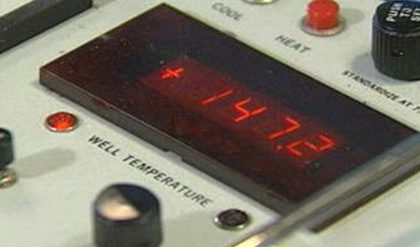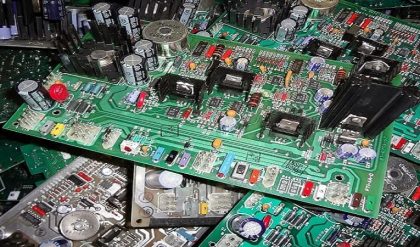Photolithography is the standard method of printed circuit board (PCB) and microprocessor fabrication. The process uses light to make the conductive paths of a PCB layer and the paths and electronic components in the silicon wafer of microprocessors. The photolithography process involves light exposure through a mask to project the image of a circuit, much like a negative image in standard photography. This process hardens a photo-resistive layer on the PCB or wafer. The hardened areas stay behind in the form of circuit paths of PCBs and CPUs. Unexposed areas are then dissolved away by a solution bath, such as an acid in wet methods or plasma-like oxygen ions in dry methods. A PCB might have as many as twelve of these layers and a processor might reach upwards of thirty, with some being metallic conductive layers and others insulating layers. Other steps include deposition of conductive metallic elements.
Process shrinks, also known as die shrinks, are one of the main ways that the miniaturization of electronic devices is made possible. Photolithography process shrinks involve miniaturization of all semiconductor devices, in particular transistors. Processors made on a smaller scale generally mean more CPUs per wafer, either for cheaper production or a more complex and powerful processor in a given die size. Progress in miniaturization also fosters faster transistor switching speeds and lower power consumption, so long as there is not too much current leakage (which is one of the challenges that increase with this progress).
Technology speculators have long predicted the end of photolithography as a viable method of making faster and cheaper processors. Since the 1980s, it has been thought it would not be possible to produce a structure smaller than one micrometer. As technology progresses, it requires shorter wavelengths of light and more tricks to focus down ever smaller. Due to the increasingly miniscule scale, a speck of dust can potentially ruin a processor. To safeguard the process, photolithography takes place in very clean rooms. Processors made in the 1970s through earlier methods used regular white light to produce processors on a scale of 10 micrometers. Currently, they might use extreme ultra violet lightfor its smaller wavelength. The mask might be immersed in very pure deionized water, among other tricks, to enable the manufacturing of processors on a 22-nanometer scale with features that are actually smaller than the wavelength of light used. Current processors are so small they require a scanning electron microscope just to observe their structures.




